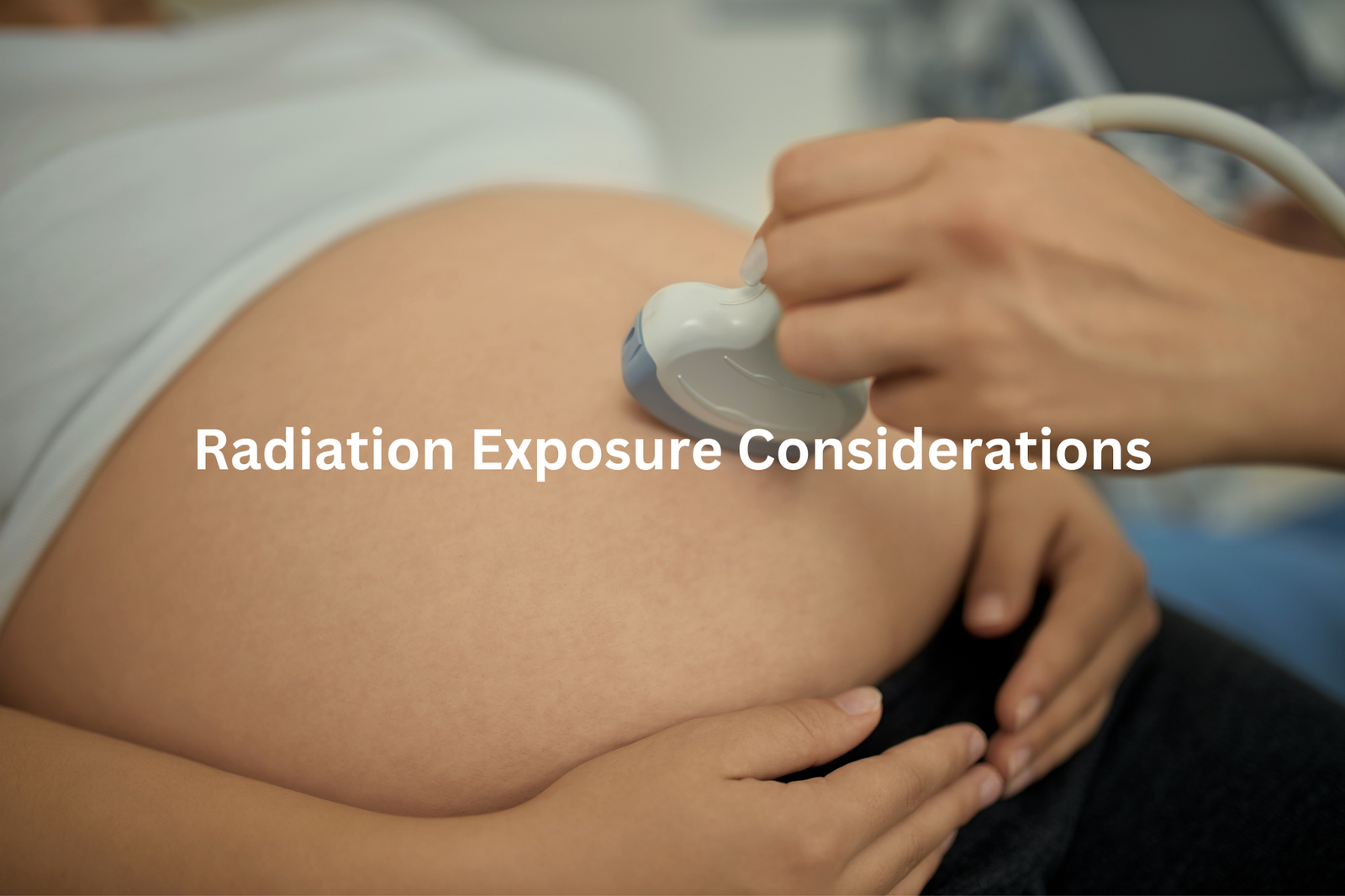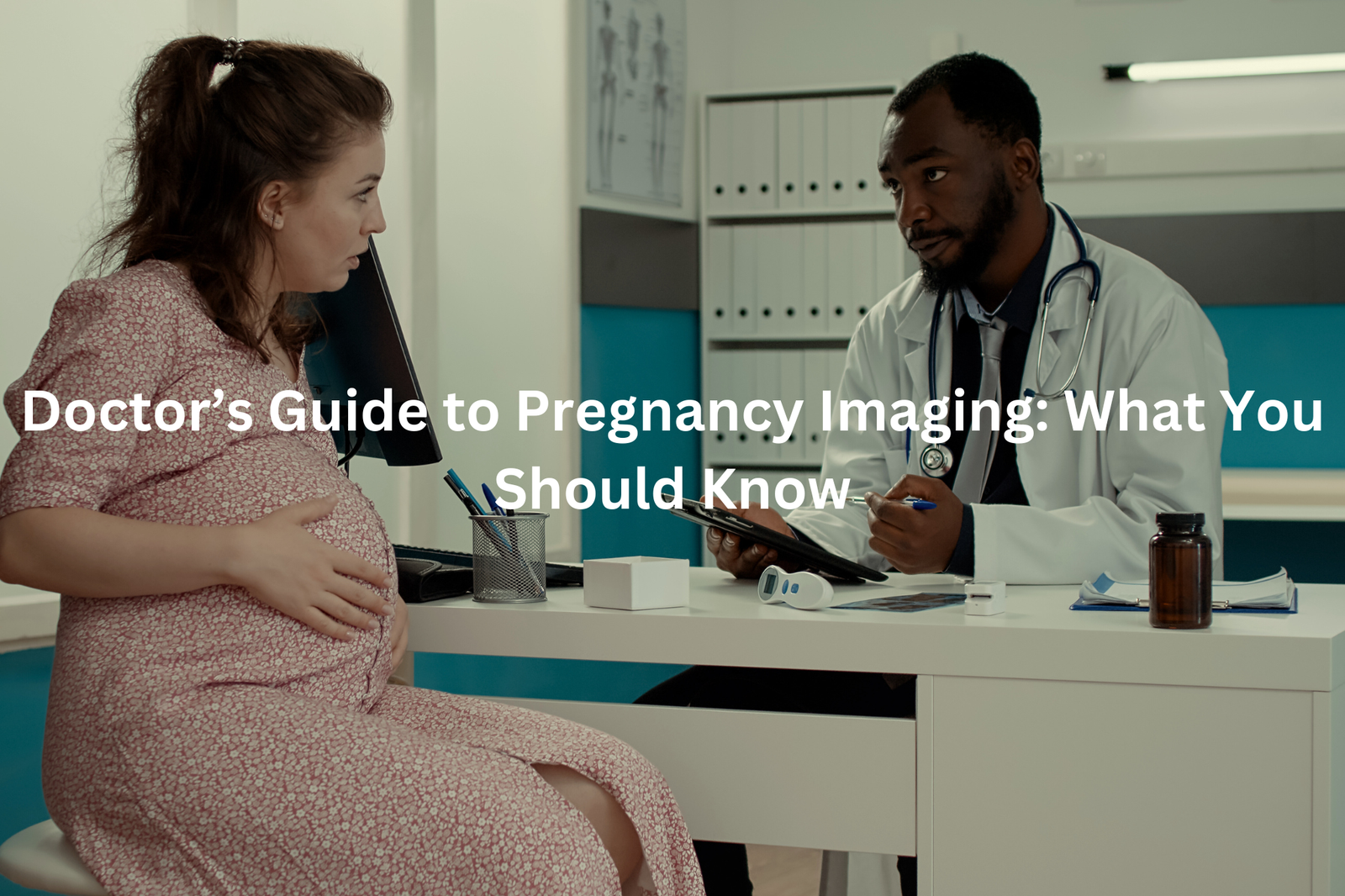Doctor’s recommendations for pregnancy imaging—what scans you need & why they matter for your baby’s health.
Pregnancy monitoring requires several medical imaging tests for both mother and baby’s health. The key test happens at 18-20 weeks – an ultrasound scan that shows the baby’s size (measured in millimeters) and checks vital organs like the heart, brain, and spine.
Blood tests during pregnancy track various markers. The first trimester screening (done at 11-13 weeks) checks hormone levels and looks for potential health concerns. Later tests monitor iron levels and check for gestational diabetes.
These medical screenings help doctors spot any issues early, making pregnancy safer for everyone involved. So, if you’re pregnant, talk to your doctor about imaging tests. It’s a good way to care for your little one! Keep reading for more details.
Key Takeaways
- Ultrasound scans are safe and help check your baby’s health.
- Different scans are recommended at different stages of pregnancy.
- Talk to your healthcare provider about any questions or concerns.
Understanding Ultrasound Recommendations
Ultrasound scans provide a window into pregnancy, showing detailed images of babies before birth. During the first scan, between 8 and 14 weeks, sonographers measure the crown-rump length (30-80mm) to determine the due date and check early development.
The nuchal translucency scan follows at 11-13 weeks, measuring fluid behind the baby’s neck (normal range 1.0-2.5mm). This screening helps identify potential chromosomal conditions, while also capturing early movements and organ formation.
The morphology scan, performed at 18-22 weeks, examines major structures. Sonographers check the heart’s four chambers, brain development, spine alignment, and limb formation. The scan also looks at placental position and amniotic fluid levels.
Additional scans might be needed for specific conditions:
- Gestational diabetes monitoring
- Unexplained bleeding
- Growth concerns
- Multiple pregnancies
Modern ultrasound machines can detect issues as small as 1mm, making them reliable tools for pregnancy monitoring. Regular scans help track growth patterns and spot potential concerns early.
The Safety of Ultrasound
Sources: Radiology Without Borders.
Ultrasound scans create pictures of unborn babies using sound waves that bounce off body tissues. These waves, traveling at speeds above 20,000 cycles per second, don’t harm the growing baby or the mother.
Australian hospitals typically schedule three main scans during pregnancy. The dating scan (8-14 weeks) measures the tiny baby, usually 30-80mm long, to confirm the due date. Between weeks 11-13, doctors perform the nuchal translucency scan, checking the fluid at the back of the baby’s neck. The big morphology scan happens at 18-22 weeks, examining everything from the heart to the tiniest toes.
Some pregnancies need extra monitoring. Mums with gestational diabetes or high blood pressure might get additional scans. While ultrasounds are safe, doctors only recommend them when medically necessary. The standard three scans work well for most pregnancies, providing clear images of the baby’s growth and development through sound-wave technology.
Access to Imaging Services
Ultrasound access in Australia varies based on location. The medical imaging gap between cities and rural areas affects countless pregnant women each year(1).
Major cities (Gold Coast, Bowen Hills) offer multiple scanning options with short waiting periods. Regional areas face limited availability, while rural locations present significant challenges – some patients travel over 100 km for basic prenatal scans.
Standard pregnancy scans include:
- Dating scan (8-14 weeks)
- Morphology scan (18-22 weeks)
- Growth scans (if needed)
The Australian Healthcare system provides Medicare coverage for these essential scans (with valid referrals). Mobile ultrasound services reach some remote areas, though scheduling remains difficult.
Booking tips for expectant mothers:
- Schedule appointments early in pregnancy
- Ask about bulk billing options
- Check for travel assistance programs
- Consider telehealth consultations
- Look into visiting mobile clinics
Early booking helps secure appointments, especially in areas with limited medical imaging services.
Radiation Exposure Considerations

Medical imaging during pregnancy needs careful thought. Different types of scans serve different purposes, and some use radiation while others don’t.
Non-radiation options lead the way in pregnancy care. Ultrasound creates pictures with sound waves, making it the safest choice for checking baby’s growth. MRI scans use magnetic fields instead of radiation, perfect for detailed views when needed.
X-rays deliver low radiation doses (under 0.01 rad), while CT scans give higher amounts. Medical staff use lead shields to protect the growing baby if these scans become necessary. They’ll always pick the lowest radiation dose that still gives clear images.
The risks from medical radiation stay quite low – much lower than natural background radiation people get every day. Still, doctors only order these scans when the benefits outweigh any risks.
Pregnant patients should ask about:
- Expected radiation dose
- Why this specific scan
- Available alternatives
- Safety measures in place
Consultation with Healthcare Providers

Medical scans during pregnancy bring up many questions for expecting parents(2). The facts are straightforward – some scans use radiation, while others don’t.
Ultrasounds use sound waves, not radiation, making them safe for regular pregnancy check-ups. X-rays produce small amounts of radiation, and doctors typically avoid them unless there’s a pressing need (like checking for broken bones). CT scans deliver higher radiation doses but might be needed in emergencies. MRI machines use magnetic fields instead of radiation, offering a safer choice for detailed images.
Medical professionals consider these key points before ordering any scan:
- The reason for the test
- The stage of pregnancy
- Available alternatives
- Risk versus benefit
Patients should feel comfortable asking their healthcare provider:
- Why this specific scan?
- What are the risks?
- Are there other options?
Most pregnancy scans are safe when properly used, and understanding their purpose helps make informed decisions.
General Tips for a Healthy Pregnancy
The first few weeks of pregnancy need careful attention to nutrition and health. Doctors suggest several key steps for a healthy start.
Folic acid (400 micrograms daily) stands as a crucial supplement, working to prevent birth defects in the baby’s brain and spine. Starting this supplement before pregnancy gives the best results.
Water intake matters too. The recommended 2.3 litres daily keeps both mum and baby healthy, supporting proper blood flow and amniotic fluid levels.
A balanced diet includes:
- Whole grain breads and cereals
- Fresh vegetables and fruits
- Lean meats and fish
- Dairy products for calcium
Regular medical check-ups track the baby’s growth through ultrasounds and blood tests(3). These appointments help spot any issues early.
Pregnant women often have questions about their care. Medical professionals can explain what’s normal and what needs attention. The right information leads to better choices for both mum and baby.
FAQ
What is a CT scan and when is it recommended during pregnancy?
A CT scan, or computed tomography scan, is a type of imaging test that uses X-rays to create detailed images of the body. For low-risk pregnancies, a CT scan is generally not recommended as the radiation exposure may be harmful to the unborn baby. However, in high-risk cases where the benefits outweigh the risks, a healthcare provider may suggest a CT scan to check for issues like spina bifida or cleft lip.
What are the different types of pregnancy imaging scans?
Pregnancy imaging scans include the anatomy scan around 20 weeks, the week scan around 12 weeks, and the fetal growth scan later in pregnancy. These scans check on the unborn baby’s development, including the heart rate, brain, spine, and other organs. They can also identify any potential problems like low amniotic fluid or issues with the placenta.
How can I prepare for my pregnancy imaging scans?
To get the best results from your imaging scans, it’s a good idea to come with a full bladder. This helps provide a clear view of the unborn baby. Your healthcare provider may also give you instructions on when to have a light meal or avoid eating beforehand. Don’t hesitate to ask questions before the scan if you have any concerns.
What should I do if I have high-risk factors for my pregnancy?
If you have high-risk factors like advanced maternal age, pre-existing medical conditions, or a family history of genetic disorders, your healthcare provider may recommend additional prenatal tests and scans. This could include things like blood tests, chorionic villus sampling, or an amniocentesis. Be sure to discuss all your options and risk factors with your provider to get the best care for you and your baby.
Where can I find more information and support during my pregnancy?
There are many great resources available, from fact sheets and video calls to peer support groups. Your healthcare provider can direct you to reliable sources of information about pregnancy imaging, tests, and general tips for a healthy pregnancy. You can also reach out to family members, trusted friends, or pregnancy support hotlines if you have any questions or concerns during this exciting time.
Conclusion
Ultrasound scans serve as essential medical checks during pregnancy (these imaging tests use sound waves to create pictures). The scans track the baby’s growth, position, and overall health at different stages. Most pregnant women need several scans – first at 12 weeks, then at 20 weeks, with possible extra scans if needed.
Medical providers recommend these tests to spot any concerns early. Regular attendance at scheduled appointments helps ensure proper monitoring of both mother and baby’s wellbeing throughout pregnancy.
References
- https://www.health.gov.au/resources/collections/pregnancy-care-guidelines-and-related-documents
- https://www.qldxray.com.au/services/pregnancy-imaging
- https://www.health.gov.au/resources/collections/pregnancy-care-guidelines-and-related-documents




